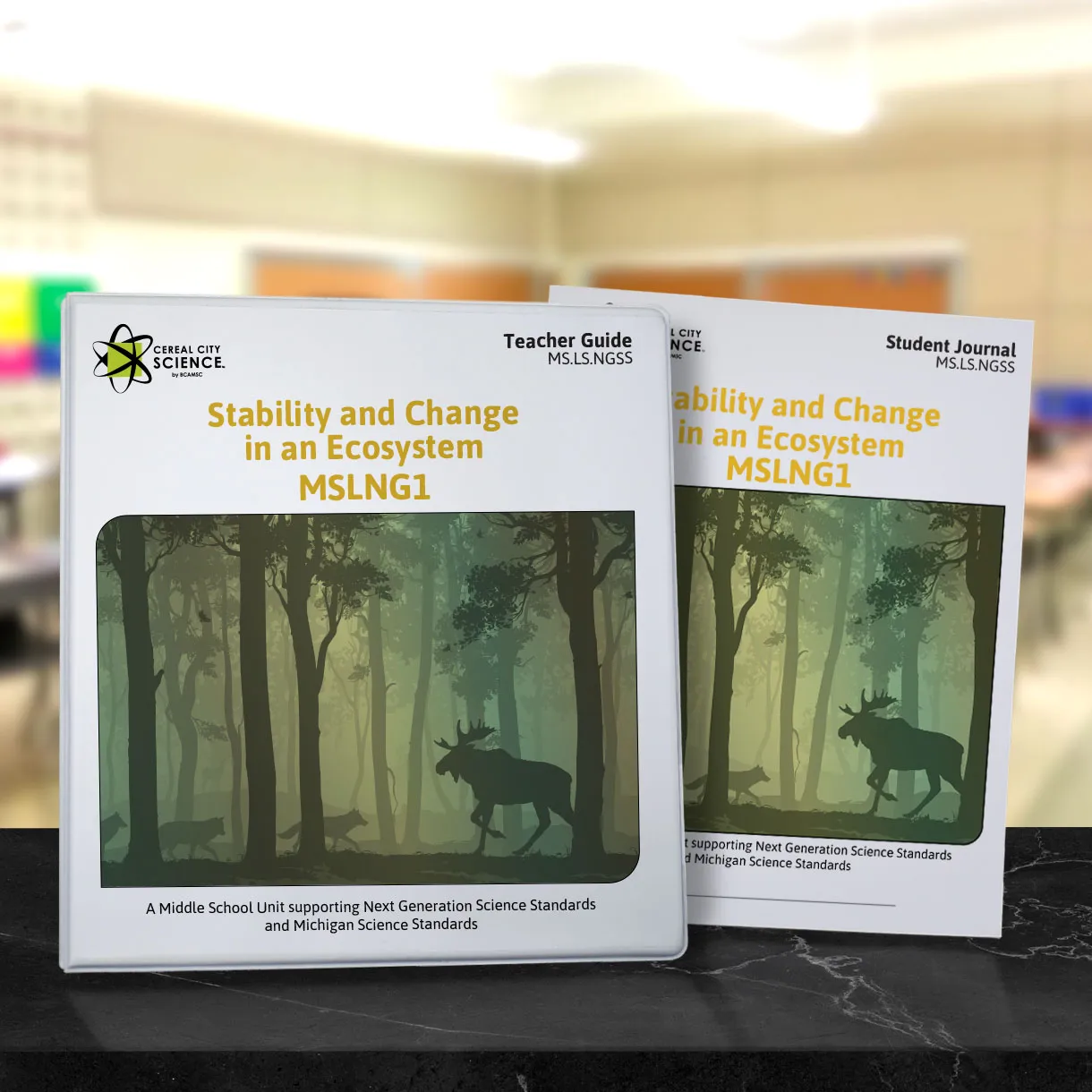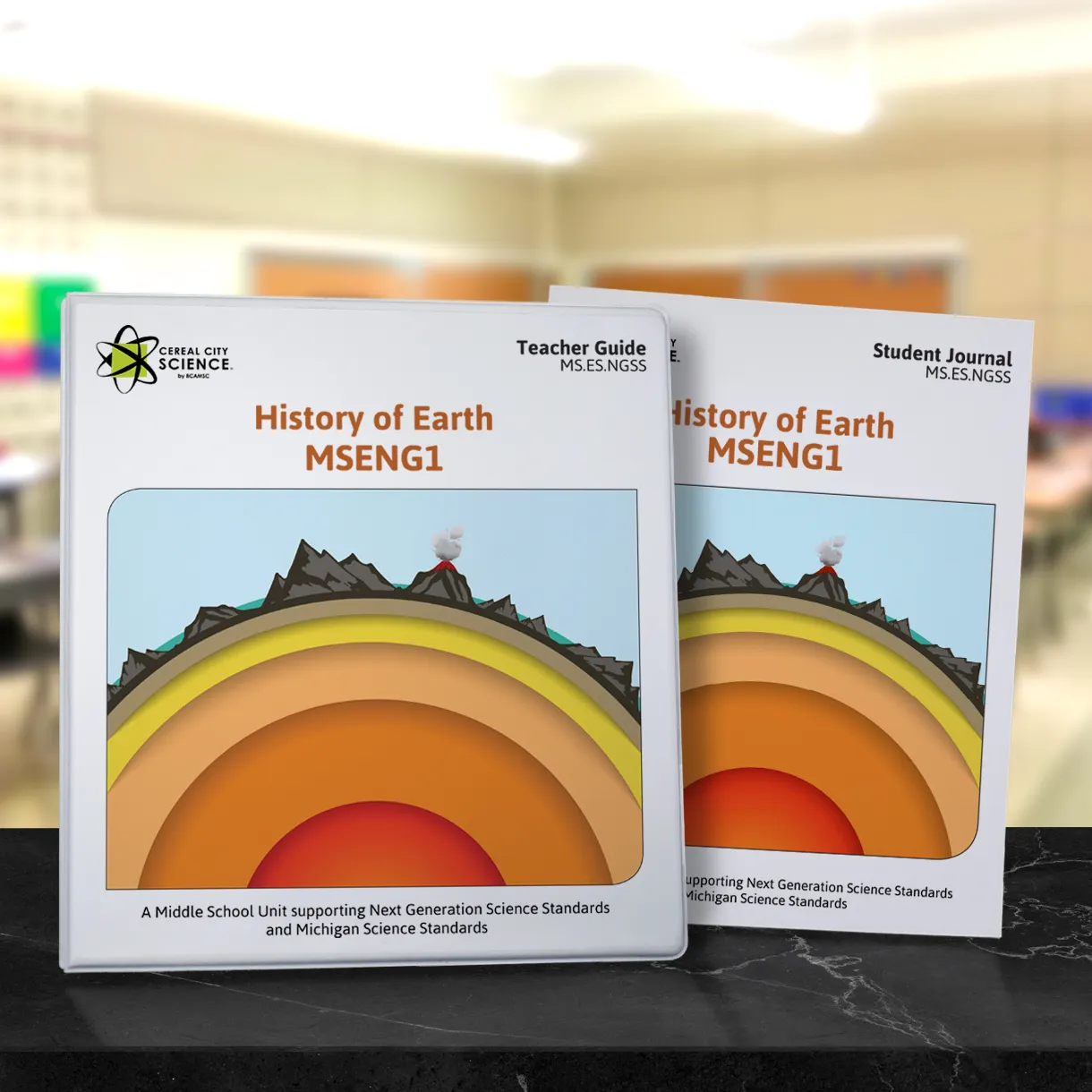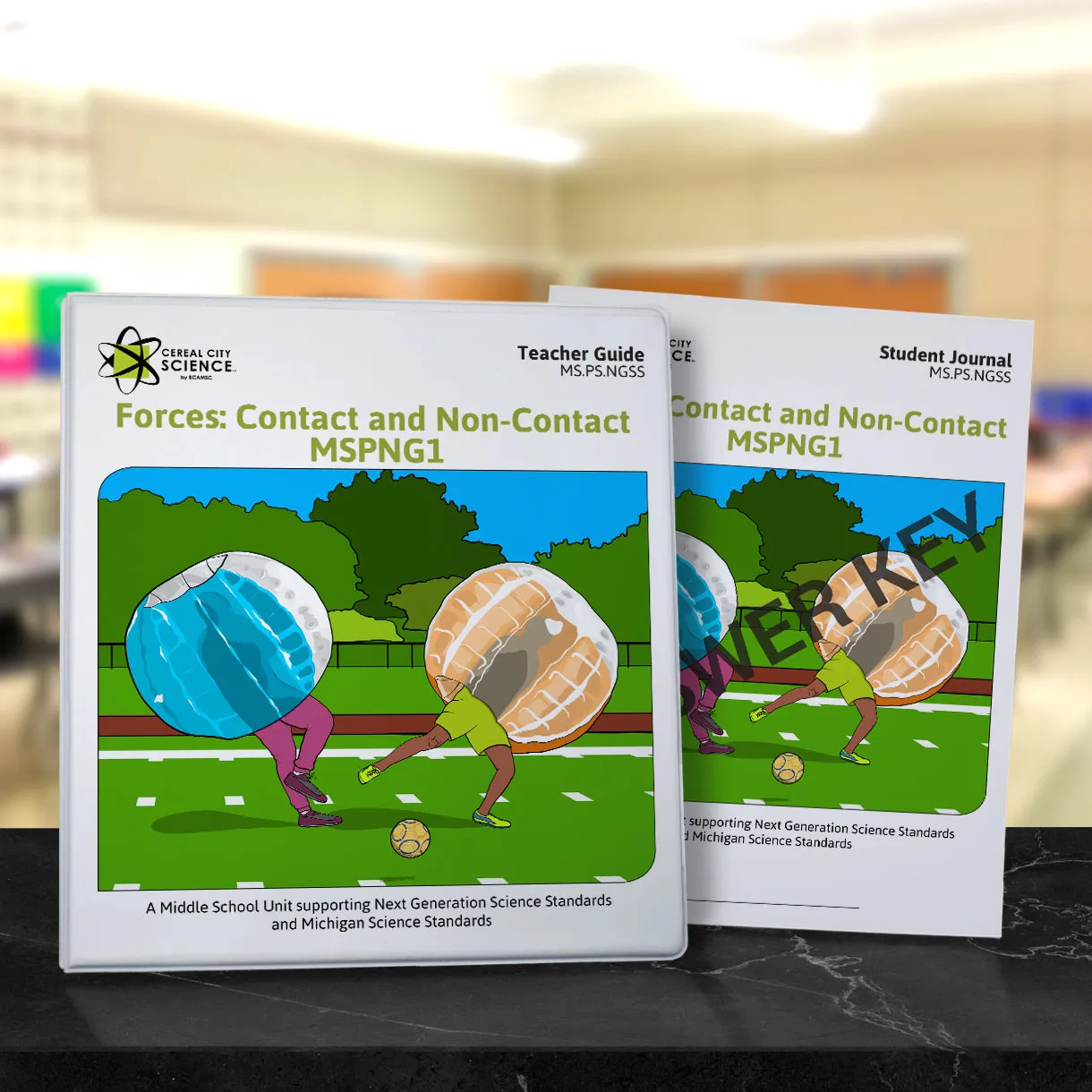Unit Details

Stability and Change in an Ecosystem
Middle School - Life Science - NGSS
In Stability and Change in an Ecosystem, middle school students explore the roles and relationships of living and nonliving things and how they contribute to the stability and change of an ecosystem. Cycles of matter and energy flow are investigated as students design and assemble a classroom model of a woodland ecosystem. Students conduct research on the fluctuations of the wolf and moose populations of Isle Royale, Michigan over the past 50 years to develop a model of predator/prey relationships between populations and to gain insight into biodiversity. Through field study, students observe a local schoolyard or park to learn more about ecosystem balance and collect materials and organisms for consideration to introduce change to their classroom woodland ecosystem. Students will consider the needs of any new organisms, along with the needs of those already in the habitat, to determine the flow of energy and any additions needed to create or maintain balance in the classroom habitat. Students will use knowledge gained from observation, informational text, research, and data collection to model trophic cascades and to develop an explanation of keystone species and the need for top predators in an ecosystem.
Anchor Phenomenon: Fluctuations in the wolf and moose populations on Isle Royale, Michigan.
Driving Question: How do the roles and interactions of living and nonliving things contribute to the stability and change of an ecosystem?
Engineering Design Challenge: Make observations of diverse organisms to develop a classroom model woodland ecosystem.
Samples, Order Forms and Packing Slip (PDF Files)
- Sample Teacher Guide and Student Journal - includes Standards and Unit at a Glance.
- MSLNG1 Packing Slip - Helpful list of the original unit contents.
- Quick Order Form - Teacher Guides, Student Journals, Material Kits, Spanish Student Journals, consumables, and organism codes.
- Spanish Student Journal Order Form
- Trade Book Order Form

